Shared posts
F/A-18 Hornet pilot’s first person view of low level formation flying over Fjords
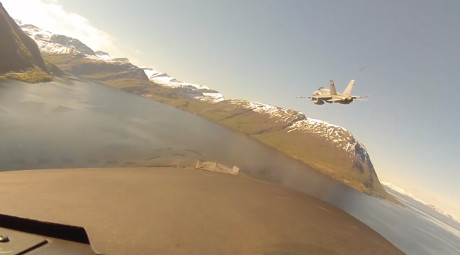
This cool footage was filmed from a Finnish Air Force F/A-18 Hornet pilot.
Nine nations have taken part in Arctic Challenge Exercise 2015, a multinational flying exercise that included approximately 115 combat aircraft deployed at several airbases in Sweden and Norway.
Among the air arms that attended ACE 2015 there is the Finnish Air Force that took part in the drills with F/A-18 Hornet jets based at Rovaniemi (Finland) and Bodø (Norway).
On Jun. 4, at the end of their ACE 2015 mission, two FiAF Hornets returned to Bodø flying over the Norwegian coastline, mountains and fjords: here below you can see the view those pilots enjoyed from their cockpits.
If you can’t see the video below, click here to watch it on FB.
H/T Giuliano Ranieri for the heads-up
This Is What It’s Like to Fly to the Edge of Space in a MiG-29 Fulcrum

GoPro cameras bring you aboard a Mig-29 Fulcrum during a flight to the Edge of Space.
Ever wondered what flying one of the most famous Russian warplanes at supersonic speed and so high (between 17 and 22 km) that you can clearly see the curvature of Earth?
The video below will give you a hint.
It was produced by MigFlug, a company that offers fighter jet flying experiences in wide variety of aircraft in Russia, Europe and North America, during a Edge of Space mission with their MiG-29 Fulcrum.
Interestingly, the video was shot by a famous aviation video producer, Artur Sarkysian, who attached a GoPro cameras to the two-seater Mig-29UB’s outer surfaces in such a way they could withstand speed up to 2450 km/h and a load factor of 9g!
From several different points of view you can watch one of the most famous Soviet-era jet (still serving in Russia, Ukraine, North Korea, Poland, Syria and Iran, among the others) fly at supersonic speed and high altitude, maneuver, perform aerobatics and land.
The video was produced over a time of 6 months. But the results are stunning.
Here below you can watch the whole video. Enjoy!
Related articles
-
 [Photo] Pro-Russia separatists have shot down another Ukrainian Mig-29 Fulcrum
[Photo] Pro-Russia separatists have shot down another Ukrainian Mig-29 Fulcrum
-
 Video shows what is it like being on the receiving end of a Mig-29 Fulcrum’s gun
Video shows what is it like being on the receiving end of a Mig-29 Fulcrum’s gun
-
 Ukrainian Mig-29 Fulcrum jets getting new digital color scheme
Ukrainian Mig-29 Fulcrum jets getting new digital color scheme
-
 Serbia’s Mig-29 Fulcrum jets return to service thanks to donation by Russia
Serbia’s Mig-29 Fulcrum jets return to service thanks to donation by Russia
-
 Video shows what aerial combat looks like from aboard a Bulgarian Mig-29 Fulcrum
Video shows what aerial combat looks like from aboard a Bulgarian Mig-29 Fulcrum
-
 Ukrainian Mig-29 Fulcrum (in display team livery) performs low pass over pro-Russia separatists
Ukrainian Mig-29 Fulcrum (in display team livery) performs low pass over pro-Russia separatists
-
 Mig-29 Fulcrum jets releasing flares over Armenia from the GoPro camera point of view
Mig-29 Fulcrum jets releasing flares over Armenia from the GoPro camera point of view
Francia exige a Google que publique su algoritmo de búsqueda
Contenido completo del post en http://blog.segu-info.com.ar o haciendo clic en el título de la noticia
Here are some cool images of Russian Su-34 attack planes intercepted by Spanish Typhoons over the Baltic
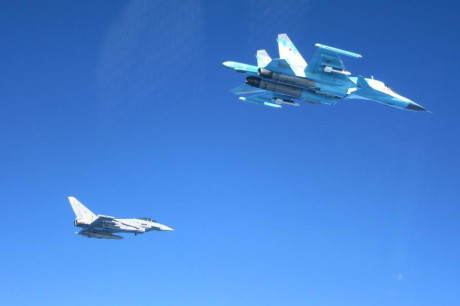
Some cool pics showing the “zombies” intercepted by the Spanish Eurofighter Typhoons have emerged.
Deployed at Ämari airbase, in Estonia, four Eurofighter Typhoons and 114 personnel of the Ejército del Aire (Spanish Air Force) have been supporting the NATO Baltic Air Policing (BAP) mission since Jan. 1, 2015.
Four C.16s (according to the SpAF designation) belonging to Ala 11, from Moron airbase, contribute to the air defense of the airspaces of Estonia, Latvia and Lithuania.
Just like the Italian Typhoons deployed at Siauliai, Lithuania, the Spanish C.16s of the “Detachment Amber” are frequently requested to scramble to identify and escort Russian warplanes flying over the Baltic Sea.
On the Spanish media outlet ABC.es, one of our readers, Antonio Valencia, has found some cool images that show the Spanish Air Force Typhoons escorting some Russian Air Force planes, including a couple of Su-34 Fullback bombers.
Once again, such photographs confirm that the Baltic is the stage for some really interesting close encounters between Baltic Air Patrol QRA (Quick Reaction Alert) jets with “Ivan”.
Although no further detail about the images has been released, the fact that they depict two Su-34s at least one Su-27 and one An-26 may suggest the photographs were shot on Mar. 21, when two An-26s, two Su-27s, two Su-34s were identified according to the Latvia MoD:
Air Policing jets on 21 MAR in international airspace above the Baltic Sea near LV border identified RU AF. 2x An-26, 2x Su-27, 2x Su-34.
— NBS (@Latvijas_armija) March 21, 2015
However, needless to say, they may have been taken on different missions.
As leading service of the current BAP rotation, the Italian Air Force has recently claimed that its Typhoons have launched 27 times (currently 28) since the beginning of the year to intercept Russian aircraft flying in international airspace.
Although such “escorts” are no more than routine stuff most of the times, a few intercept missions have been a bit tense: in one case, a Tu-22 was unusually flying at supersonic speed towards Sweden; in another episode, a Mig-31 Foxhound almost collided (at least according to the Royal Norwegian Air Force report) with an F-16 involved in a Su-34 identification and escort mission.
Image credit: SpAF via Foro de las FAS españolas
Related articles
-
 Focus on Eurofighter Typhoons’ role in Exercise Anatolian Eagle in Turkey
Focus on Eurofighter Typhoons’ role in Exercise Anatolian Eagle in Turkey
-
 These are the first pictures of the Italian Typhoon jets providing NATO Baltic Air Policing in Lithuania
These are the first pictures of the Italian Typhoon jets providing NATO Baltic Air Policing in Lithuania
-
 Italian Eurofighter Typhoons ready to take over lead role in NATO Baltic Air Policy
Italian Eurofighter Typhoons ready to take over lead role in NATO Baltic Air Policy
-
 Russian Tu-22 bomber scares NATO air defenses flying at supersonic speed over the Baltic Sea for the first time
Russian Tu-22 bomber scares NATO air defenses flying at supersonic speed over the Baltic Sea for the first time
-
 Dutch F-16 took an interesting video of armed Russian Su-34 attack planes intercepted over the Baltics
Dutch F-16 took an interesting video of armed Russian Su-34 attack planes intercepted over the Baltics
-
 Air India Boeing 787 Dreamliner loses radio contact gets intercepted by Italian Typhoons
Air India Boeing 787 Dreamliner loses radio contact gets intercepted by Italian Typhoons
-
 RAF warplanes intercept Russian bombers on approach to Britain
RAF warplanes intercept Russian bombers on approach to Britain
43 Grupo 2014
Los corsarios del 43 publicaron a principios de año este vídeo con algunas tomas de sus operaciones durante el 2014. Está dedicado al personal de tierra que mantiene los aviones y coordina todas las operaciones de extinción de incendios. Hay que sentirse muy orgulloso del fenomenal trabajo que realizan el 43 Grupo de Fuerzas Aéreas
¡Apaga ..., y vámonos!
No, Auto-GCAS could not have prevented the Germanwings crash

Several articles have mentioned the A-GCAS (Automatic Ground Collision Avoidance System) as the military tech capable to avert the Germanwings crash.
We recently run a very detailed article about GCAT (Ground Collision Avoidance Technology), the umbrella term for a whole variety of technologies and applications in military, commercial, general and unmanned aviation aimed to prevent CFIT (Controlled Flight Into Terrain) incidents.
The Auto-GCAS (Automatic Ground-Collision Avoidance System) is an automatic system that, once installed and activated on a plane, monitors the flight parameters: to make it simple, when predictive algorithms and computer software determine that altitude, speed, attitude, GPS position, terrain are such that the CFIT is imminent, the A-GCAS automatically (without pilot initiation) sends inputs to the flight controls to recover the plane.
Developed by NASA and deployed to the U.S. F-16 fleet, A-GCAS is already credited for saving the life of a Fighting Falcon pilot involved in Operation Inherent Resolve (along with several other ones).
Will Auto-GCAS technology transition from military to civil aviation in the near future?
Whilst it’s safe to say believe technology behind Auto GCAS may one day make its way to the civilian aviation we should not forget that airliners are less prone to those kind of issues (like spatial disorientation or GLOC) that make the A-GCAS so important for jet fighters. Moreover, civil planes already feature several kinds of GCAT (Ground Collision Avoidance Technologies) that address the most common threats to the airliners.
Could such technology have prevented Germanwings crash?
Dealing with the impact the A-GCAS would have had on Germanwings CFIT, it’s safe to say that it would not have prevented the aircraft from being deliberately crashed into a mountain: A-GCAS or PARS (Pilot Activated Recovery System) are safety systems based on the assumption that pilots wants to save their planes.
Until a new version that can’t be disabled is introduced, the pilot will have the possibility to crash his/her plane on the mountain.
Furthermore these systems have some important limitations: for instance A-GCAS can’t make inputs to the throttle meaning that a pilot who wants to crash a plane may theoretically reduce throttle to idle to disable A-GCAS.
Then there is also another aspect to take into consideration: all the technology aboard a plane can become unreliable and any automatic sense-and-avoid system which acts on the flight control based on information gathered by failed sensors can become useless or even dangerous for the safety of the plane.
There are many examples (Air France 447 is among them) in which bad instrument readings, clogged pitot tubes, sensors suffering failures, etc. have been contributing factors to aviation disasters: that is the reason why pilots are usually given the possibility to disarm every onboard system, including (on military planes only, at least for the moment) the A-GCAS.
Image credit: Sebastien Mortier
Related articles
-
 F-16’s automatic ground collision avoidance system: details, strengths and limitations
F-16’s automatic ground collision avoidance system: details, strengths and limitations
-
 Lightning strikes near MC-130E Combat Talon. Are lightnings a risk to airplanes?
Lightning strikes near MC-130E Combat Talon. Are lightnings a risk to airplanes?
-
 [Photo] F-16 flips on top of another F-16 at Davis-Monthan Air Force Base
[Photo] F-16 flips on top of another F-16 at Davis-Monthan Air Force Base
-
 Video shows night aerial refueling of an F-16 during first U.S. air strike in Syria
Video shows night aerial refueling of an F-16 during first U.S. air strike in Syria
-
 More U.S. F-16s have just deployed to Poland amid Ukraine crisis
More U.S. F-16s have just deployed to Poland amid Ukraine crisis
-
 U.S. has just deployed 14 F-16s to Estonia
U.S. has just deployed 14 F-16s to Estonia
-
 Must see: the entire video of the “ultimate selfie” of an F-16 pilot firing a missile
Must see: the entire video of the “ultimate selfie” of an F-16 pilot firing a missile
Hasta la cocina de las gasolineras españolas
 |
|
Figura 1. Tanques de combustible. |
Para el envío de la información de los datos del estado de un tanque de combustible a un PC para su monitorización, se utilizan conversores de serie a Ethernet del tipo GC-NET2 32-DTE.
 |
| Figura 2. Conversor Serial - Ethernet. |
El esquema de cómo implementar el túnel serie con el dispositivo anterior para la monitorización de los datos se muestra en la siguiente figura:
 |
| Figura 3. Esquema de conexión del conversor serie a Ethernet. |
En este artículo se realizará una pequeña prueba de concepto para comprobar cuál es el nivel de seguridad de estos dispositivos.
Localización de conversores en gasolineras españolas.
El primer paso es localizar conversores accesibles desde Internet en las gasolineras de España. Algunos de ellos, para su configuración remota, utilizan el servicio de telnet. Haciendo un poco de hacking con buscadores, buscamos en Shodan conversores en gasolineras de España que usen el puerto 10001 TCP para su configuración:
 |
| Figura 4. Estado de un tanque de combustible de una gasolinera de Palencia. |
Servidor telnet no securizado.
Una vez que ya tenemos un listado de gasolineras que usan este tipo de conversores para el envío de la información y su monitorización a través de un PC, el siguiente paso es detectar algún conversor con un servicio de telnet sin securizar. En la siguiente imagen se muestra uno de estos sistemas con un servidor telnet escuchando por el puerto 999 TCP.
 |
| Figura 5. Conversor con el servicio telnet corriendo en el puerto 9999. |
Realizando una conexión desde un cliente telnet al puerto 9999 TCP, observamos cómo el dispositivo no solicita ningún dato de acceso. Directamente podemos acceder a su configuración permitiendo por completo la manipulación de los parámetros del sistema de adquisición y envío de la información de los tanques de combustible al PC de monitorización.
 |
| Figura 6. Conexión por telnet sin autenticación. |
 |
| Figura 7. Servicios accesibles desde la IP pública de la gasolinera. |
 |
| Figura 8. Cámaras IP de la gasolinera. |
Y es más, algunos de los servidores que monitoriza la información recogida por los conversores tiene instalado un Windows XP (sistema operativo sin soporte desde el 8 de abril de 2014) y con escritorio remoto abierto (puerto 3389 TCP), como se muestra en las siguientes figuras:
 |
| Figura 9. Servicio de escritorio remoto activo. |
 |
| Figura 10. Acceso a través del escritorio remoto a un PC con Windows XP. |
En este escenario, podrían probarse técnicas como las Sticky Keys para saltarse las aplicaciones de bloqueo del sistema y llegar al menú de impresoras y desde allí a la raíz del sistema de ficheros
Conclusión.
Con lo recogido anteriormente, sería muy fácil realizar un ataque dirigido a gasolineras para sabotear el sistema de monitorización y que éste ofreciese datos erróneos al operador de la gasolinera.
¿Qué pasaría si el operador pensando que ya no hay más combustible en los tanques cierra la gasolinera hasta que vengan los camiones de repostaje de combustible? ¿Qué ocurriría si la temperatura de los depósitos de combustible es elevada y el operario no se percata de esta situación? ¿Qué sucedería si de repente el sistema muestra que no queda más combustible en los tanques en plena hora punta de una operación salida o retorno? ¿Cuáles serían las pérdidas de las gasolineras?
Y lo más importante, ¿en qué grado afectaría a la seguridad de las personas?
PD: los resultados obtenidos en esta prueba de concepto ya han sido reportados.
Chuck Norris Writes to Save the A-10 Warthog from Retirement
 Air Force leaders wanting to send the A-10 Thunderbolt to the bone yard already have any number of lawmakers criticizing them from Capitol Hill.
Air Force leaders wanting to send the A-10 Thunderbolt to the bone yard already have any number of lawmakers criticizing them from Capitol Hill.
Now they’ve got “Lone Wolf McQuade” coming after them.
Action star Chuck Norris – an Air Force veteran – on Monday delivered an editorial roundhouse kick to the Air Force, arguing on the World Net Daily website that the “Warthog” – as it is known – still has plenty of fight left in it.
In the ongoing campaign against ISIS, Norris writes, “the A-10′s utility is warranted even more now than ever.”
“Its firepower capability, speed and accuracy, frequent war use, and the oft-painted teeth on its nose cone have made it one of the military’s most popular aircraft,” Norris wrote.
Norris said its “combination of large and varied ordnance load, long loiter time, accurate weapons delivery, austere field capability, and survivability has proven invaluable to the United States and its allies.”
Congress has been running interference against Pentagon plans to dump the plane, saving it through 2015 with $635 million drawn from the war funding budget. But the Air Force has made clear it wants to begin retiring the Thunderbolt fleet next year, linking the move to paying for the development of the Joint Strike Fighter.
In his column, Norris throws some jabs at Warthog critics, including Air Combat Command Commander Gen. Herbert “Hawk” Carlisle, who is quoted as saying: “There’s only so much you can get out of that airplane. Those airplanes are gonna wear out.”
“But that statement is true of every airplane in existence, and even the sun!” Norris wrote. “The question is: Is the fleet of A-10 ready for retirement? I just celebrated my 75th birthday, but I’m nowhere near ready to head to the scrapheap. Some things improve with age, and the A-10 has done just that, too.”
Norris, a martial arts world champion who began training while in the Air Force in the late 1950s, has achieved almost folk legend status — portrayed as someone who can never be defeated and capable of bending man and nature to his will and fists.
The martial arts superstar has gained further recent fame with an influx of comedic one-liners about his perceived super powers such as — “Chuck Norris died 20 years ago, Death just hasn’t built up the courage to tell him yet,” or “Chuck Norris and Superman once fought each other on a bet. The loser had to start wearing his underwear on the outside of his pants.”
To further bring attention to and save the A-10, Norris is producing and selling a T-shirt with the words “Save the A-10” on the front, and on the back, “Chuck Norris’ First Born Son was a Warthog. He cried tears of ‘BRRRRRRRRRRRTTTTT.”
All proceeds from the T-shirt sales will go toward his martial arts charity, Kickstart Kids.
– Bryant Jordan can be reached at Bryant.Jordan@military.com
The amazing story of Bill Weaver: the Blackbird pilot who survived his SR-71 disintegration
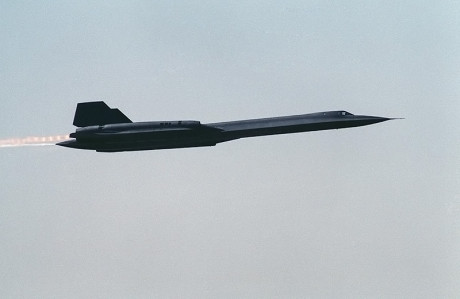
The incredible story of a lucky SR-71 pilot who survived to a Blackbird disintegration at Mach 3+
Built as a strategic reconnaissance aircraft able to fly at 88,000 feet and Mach 3, the iconic Lockheed SR-71 required aircrews to wear a special silver pressure suit to ensure their safety. This proved to be much useful during the time, as the aircraft experienced several accidents at very high speeds and altitudes during its test flights.
The protection provided by these suits was put to test on Jan. 25, 1966 when Blackbird tail number 952 disintegrated mid-air during a systems evaluation flight. The mission was intended to investigate procedures designed to reduce trim drag and improve high Mach cruise performance while the center of gravity (CG) was located further aft than normal, reducing the Blackbird’s longitudinal stability.
The SR-71 was driven by Bill Weaver with a Lockheed flight test specialist, Jim Zwayer in the back seat and it took off from Edwards AFB at 11:20 am . They refueled from a KC-135, accelerated to Mach 3.2 and climbed to 78,000 feet, which was their initial cruise altitude.
During a programmed thirty-five-degree bank right turn they experienced an “inlet unstart” that caused the immediate unstart on the right J-58 engine, forcing the aircraft to roll further right and start to pitch up. An inlet unstart happened when a shock wave was rapidly ejected back outside the inlet. When an inlet unstart occurred a device called the cross-tie system was enabled to minimize the extreme rolling and yaw of the aircraft and to prevent the good inlet from unstarting. At the same time the cross-tie system also restarted the good engine. As Weaver himself told to former Blackbird pilot Col. Richard H. Graham in his book, “SR-71 The Complete Illustrated History of THE BLACKBIRD The World’s Highest, Fastest Plane”: “I jammed the control stick as far left and forward as it would go. No response. I instantly knew we were in for a wild ride.”
Since the chances to survive an ejection at Mach 3.18 and 78,000 feet weren’t very good, Weaver and Zwayer decided to stay with the aircraft to restore control until they reached a lower speed and altitude, but the cumulative effects of system malfunctions exceeded flight control authority. Everything seemed to unfold in slow motion, even if the time from event onset to catastrophic departure from controlled flight was only two to three seconds.
Weaver recalls that he was “still trying to communicate with Jim, I blacked out, succumbing to extremely high g-forces. Then the SR-71 literally disintegrated around us.”
Weaver struggled to realize what was really happening. “I could not have survived what had just happened. I must be dead. As full awareness took hold, I realized I was not dead. But somehow I had separated from the airplane. I had no idea how this could have happened; I hadn’t initiated an ejection. The sound of rushing air and what sounded like straps flapping in the wind confirmed I was falling, but I couldn’t see anything. My pressure suit’s face plate had frozen over and I was staring at a layer of ice.”
It was at that point that the pressure suit proved to be very effective protection for Weaver. In fact, once it was inflated, an emergency oxygen cylinder in the seat kit attached to the parachute harness was functioning. It not only supplied breathing oxygen, but also pressurized the suit, preventing Weaver’s blood from boiling at the extremely high altitude. In this way the suit’s pressurization had also provided physical protection from intense buffeting and g-forces. That inflated suit had become like a tiny escape capsule.
Another system conceived to safeguard the Blackbird aircrew during the bailout procedure was the SR-71’s parachute system. To prevent body tumbling motions and physical injury due to the centrifugal forces it was designed to automatically deploy a small-diameter stabilizing parachute shortly after ejection and seat separation.
Since Weaver had not intentionally activated the ejection sequence, he thought that stabilizing chute might not have deployed. But he quickly determined he was falling vertically and not tumbling, meaning that the little parachute had deployed and was doing its job. The next concern was for the main parachute, which was designed to open automatically at 15,000 feet, but again he had no assurance the automatic-opening function would work. So Weaver decided to open the faceplate, to estimate his height above the ground but as he reached for the faceplate, he felt the reassuring sudden deceleration of main parachute deployment.
After landing, Weaver was rescued by Albert Mitchell Sr., owner of a ranch in northeastern New Mexico, who helped him with the chute, then reached Zwayer who had landed not far away, with his own Hughes helicopter. Mitchell returned few minutes later reporting that Zwayer was dead: in fact he had suffered a broken neck during the aircraft’s disintegration and was killed almost instantly. Moreover Mitchell said that his ranch foreman would watch over Zwayer’s body until the arrival of the authorities and he flew Weaver to the Tucumcari hospital.
Investigation of the incident determined that the nose section of the Blackbird had broken off aft of the rear cockpit and crashed ten miles from the main wreckage. The resultant very high g-forces had literally ripped Weaver and Zwayer from the airplane. After this crash, testing with the CG aft of normal limits was discontinued, and trim-drag issues were resolved via aerodynamic means. Moreover the inlet control system was improved and the inlet unstarts almost stopped with the development of the Digital Automatic Flight and Inlet Control System.
Two weeks after the accident Weaver was back in a Blackbird. As he recalls: “It was my first flight since the accident, so a flight test engineer in the back seat was probably a little apprehensive about my state of mind and confidence. As we roared down the runway and lifted off, I heard an anxious voice over the intercom. “Bill! Bill! Are you there?” “Yeah George. What’s the matter?” “Thank God! I thought you might have left.” The rear cockpit of the SR-71 has no forward visibility – only a small window on each side – and George couldn’t see me. A big red light on the master-warning panel in the rear seat had illuminated just as we rotated, stating: “Pilot Ejected”. Fortunately, the cause was a misadjusted micro switch, not my departure.”
Image credit: U.S. Air Force
Related articles
-
 [Photo] SR-71 Blackbird and chase car
[Photo] SR-71 Blackbird and chase car
-
 SR-71 Blackbird was so fast it outran every missile, Mig fighter jet encountered over enemy territory
SR-71 Blackbird was so fast it outran every missile, Mig fighter jet encountered over enemy territory
-
 MiG working on a new interceptor, capable of Mach 4
MiG working on a new interceptor, capable of Mach 4
-
 Last SR-71 Blackbird engine test in full afterburner at Edwards Air Force Base
Last SR-71 Blackbird engine test in full afterburner at Edwards Air Force Base
-
 This rocket-like plane could have been the SR-71 Blackbird replacement
This rocket-like plane could have been the SR-71 Blackbird replacement
-
 Lockheed Martin’s Skunk Works reveals a Mach 6 strike successor of SR-71 Blackbird dubbed SR-72
Lockheed Martin’s Skunk Works reveals a Mach 6 strike successor of SR-71 Blackbird dubbed SR-72
-
 [Video] Enjoy a guided tour into the cockpit of an SR-71 Blackbird
[Video] Enjoy a guided tour into the cockpit of an SR-71 Blackbird
Ask Hackaday: The Many Uses of Microwaves
When most think of a microwave, they think of that little magic box that you can heat food in really fast. An entire industry of frozen foods has sprung up from the invention of the household microwave oven, and it would be difficult to find a household without one. You might be surprised that microwave ovens, or reactors to be more accurate, can also be found in chemistry labs and industrial complexes throughout the world. They are used in organic synthesis – many equipped with devices to monitor the pressure and temperature while heating. Most people probably don’t know that most food production facilities use microwave-based moisture solids analyzers. And there’s even an industry that uses microwaves with acids to dissolve or digest samples quickly. In this article, we’re going to look beyond the typical magnetron / HV power supply / electronics and instead focus on some other peculiarities of microwave reactors than you might not know.
Single vs Multimode
The typical microwave oven in the millions of households across the world is known as multimode type. In these, the microwaves will take on typical wavelike behavior like we learned about in physics 101. They will develop constructive and destructive interference patterns, causing ‘hot spots’ in the cavity. A reader tipped us off to this example, where [Lenore] uses a popular Indian snack food to observe radiation distribution in a multimode microwave cavity. Because of this, you need some type of turntable to move the food around the cavity to help even out the cooking. You can avoid the use of a turn table with what is known as a mode stirrer. This is basically a metal ‘fan’ that helps to spread the microwaves throughout the cavity. They can often be found in industrial microwaves. Next time you’re in the 7-11, take a look in the top of the cavity, and you will likely see one.
Multimode microwaves also require an isolator to protect the magnetron from reflected energy. These work like a diode, and do not let any microwaves bounce back and hit the magnetron. It absorbs the reflected energy and turns it into heat. It’s important to note that all microwave energy must be absorbed in a multimode cavity. What is not absorbed by the food will be absorbed by the isolator. Eventually, all isolators will fail from the heat stress. Think about that next time you’re nuking a small amount of food with a thousand watts!
Single Mode microwaves are what you will find in chemistry and research labs. In these, the cavity is tuned to the frequency of the magnetron – 2.45GHz. This allows for a uniform microwave field. There is no interference, and therefore no hot or cold spots. The microwave field is completely homogenous. Because of this, there is no reflected energy, and no need for an isolator. These traits allow single mode microwaves to be much smaller than multimode, and usually of a much lower power as there is a 100% transfer of energy into the sample. While most multimode microwaves are 1000+ watts, the typical single mode will be around 300 watts.

Power Measurement
Most microwave ovens only produce one power level. Power is measured and delivered by the amount of time the magnetron stays on. So if you were running something at 50% power for 1 minute, the magnetron would be on for a total of 30 seconds. You can measure the output power of any microwave by heating 1 liter of water at 100% power for 2 minutes. Multiply the difference in temperature by 35, and that is your power in watts.
There are other types of microwaves that control power by adjusting the current through the magnetron. This type of control is often utilized by moisture solids analyzers, where are more precise control is needed to keep samples from burning.
Have you used a microwave and an arduino for something other than cooking food? Let us know in the comments!
Thanks to [konnigito] for the tip!
Filed under: Ask Hackaday, Hackaday Columns





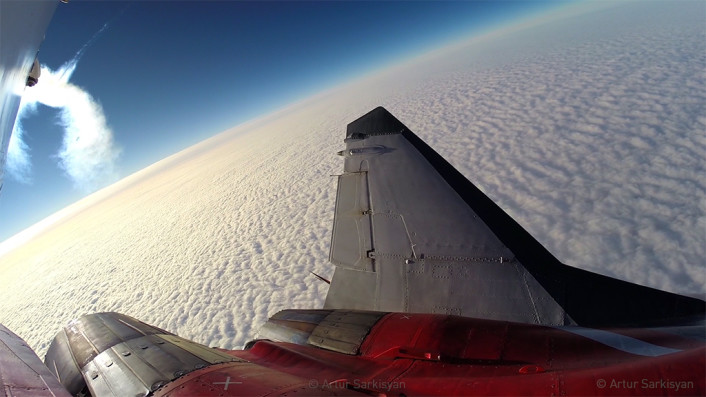

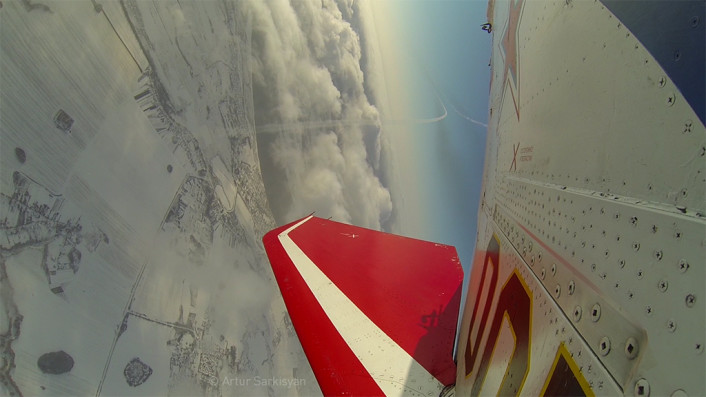
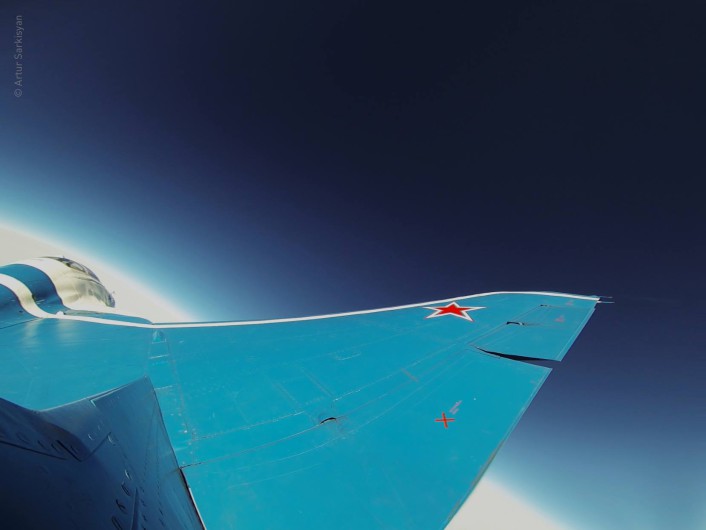










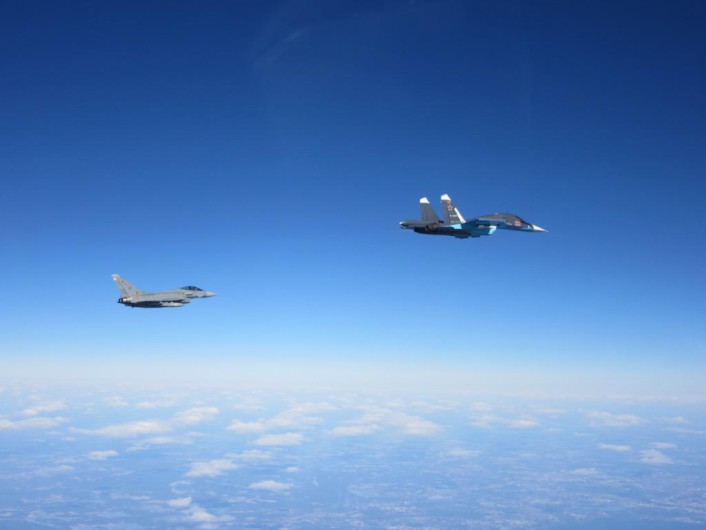
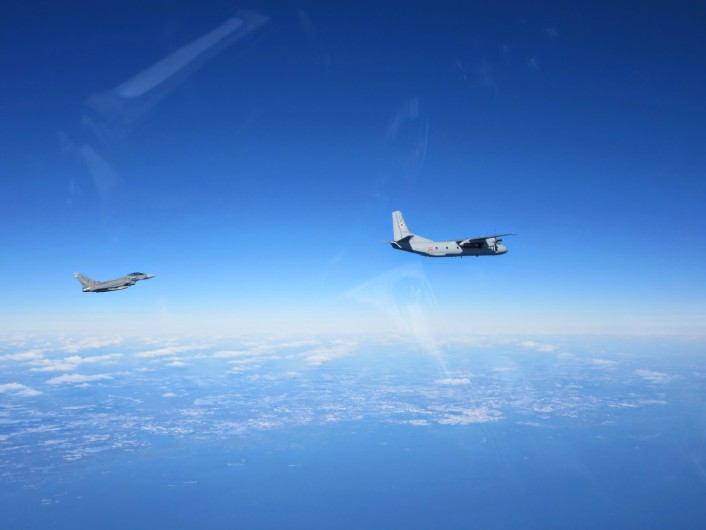






















![We all remember those famous first words spoken by an astronaut on the surface of Mars: "That's one small step fo- HOLY SHIT LOOK OUT IT'S GOT SOME KIND OF DRILL! Get back to the ... [unintelligible] ... [signal lost]" We all remember those famous first words spoken by an astronaut on the surface of Mars: "That's one small step fo- HOLY SHIT LOOK OUT IT'S GOT SOME KIND OF DRILL! Get back to the ... [unintelligible] ... [signal lost]"](http://imgs.xkcd.com/comics/opportunity.png)
![[Halfway to the Sun ...] Heyyyy ... what if this BALLOON is full of acorns?! [Halfway to the Sun ...] Heyyyy ... what if this BALLOON is full of acorns?!](http://imgs.xkcd.com/comics/squirrel_plan.png)










![Googling inevitably reveals that my problem is caused by a known bug triggered by doing [the exact combination of things I want to do]. I can fix it, or wait a few years until I don't want that combination of things anymore, using the kitchen timer until then. Googling inevitably reveals that my problem is caused by a known bug triggered by doing [the exact combination of things I want to do]. I can fix it, or wait a few years until I don't want that combination of things anymore, using the kitchen timer until then.](http://imgs.xkcd.com/comics/hard_reboot.png)